Sharlyn J. Lauby's Blog, page 68
May 9, 2021
6 Employee Strategies for Your Non-Desk Workforce

One of the concepts that organizations will want to define in 2021 is what the hybrid workforce means for them. I’ve seen it referred to as when the workforce is more equally balanced between onsite and remote employees. I’ve also seen it defined as when employees have the option to work where it makes the most sense for what they do. And of course, there’s a lot of room in between to create your own version.
I know that some organizations are concerned about a hybrid workforce because they feel that it will take something away from their culture. Frankly, I’m torn on this topic. On one hand, I see the point about remote employees needing to be a part of company culture. That’s critical! But on the other, I don’t know that it’s impossible to do. It does take some planning.
During last year’s virtual HR Technology Conference, I listened to a session with Sarah Cousin, head of internal communications with Chalhoub Group, that was focused on how their organization – a luxury retailer with over 12,000 employees was handling the pandemic. I thought her talk took a very practical approach to the current situation.
It also made me realize a few employee strategies that could be helpful not only in the months to come but when it comes to the future of remote work. The first is in what we call it. Maybe “remote” isn’t the right word. Maybe “remote” implies a disconnect between the people who are working in the office and the ones who aren’t. Cousin used the term “non-desk workforce” and I kinda liked it. Everyone is an employee. Some employees have workplace desks. Others don’t. A desk doesn’t define culture. Or at least, it shouldn’t. Here are a few more takeaways from her talk that might be worth considering:
Recruiting. It’s time to consider non-desk work when creating jobs. Organizations should include in job descriptions whether a job can be a non-desk job. Let candidates know when they’re applying for work whether the job is a non-desk position. It’s possible that it could be helpful to individuals when they’re reading the job posting. I believe in the past, the conversations about remote work have been focused on the job but not at this same level. Instead of designing the job then asking if it can be a non-desk role, let’s design the job with non-desk in mind. Technology and Equipment. In addition to job design, organizations need to think about what tools, both in terms of technology and home office equipment, non-desk employees will need to be successful. Start budgeting for those items the same way that the company budgets for in-office technology and tools. Don’t make the assumption that non-desk employees won’t need a few things to make themselves productive. Consult with finance and legal about how purchasing equipment for non-desk employees will be handled.Relationships. This ties into the previous point about technology and equipment. Employees need to be able to communicate with each other, regardless of their location. Organizations build communications infrastructures so all in-office employees are able to connect. Now, the same communication structure must be adapted to accommodate non-desk employees. I’m intentionally not focusing on the employee – manager relationship because I think everyone is already focused on it. But employees have more working relationships than the one they have with their manager. Take care of those relationships too.Training. With this new way of working, employees at every level will need training. Some of it could be technology related. It’s also possible that everyone in the organization could benefit from some training on how to better communicate. In addition to thinking about what topics the organization might need training on, consider the format. I could see internal webinars becoming a very popular way to pass along knowledge. I believe that organizations weren’t very focused on training in 2020 and that’s going to have to change. Especially if the organization wants to make up for financial and non-financial losses that they incurred because of COVID-19.Well-being. In her session, Cousins placed an emphasis on providing employees with well-being support and resources. I was really pleased to hear it. This wasn’t presented as a desk versus non-desk issue. It also wasn’t a pandemic issue. Organizations need to realize that employee well-being is important and creates a better workplace. Cousins talked about employees coming up with challenges to help each other and developing their own buddy systems for support.Customer Service. Everything we’ve discussed has an impact on customers. That’s really what this article is about. The way we manage a hybrid workforce has an impact on customers and the business. Non-desk employees need to have the tools to take care of customers. They need the technology to take care of customers. They should be trained to handle customer issues and know what to do if they need a manager’s guidance.In the foreseeable future, organizations will be managing a hybrid workforce. It’s possible that what’s taken place in 2020 could usher in more non-desk work than we anticipated. But if we want employees to be engaged and stay with us, we need to have clear guidelines about the work and how it will get done. In 2020, organizations made a lot of decisions with very little information … and that’s okay. It’s what needed to be done. We have more information now. It’s time to use it to create better employee strategies.
Image captured by Sharlyn Lauby after speaking at the SHRM Annual Conference in Washington, DC
The post 6 Employee Strategies for Your Non-Desk Workforce appeared first on hr bartender.






May 6, 2021
Bookmark This! The Manager Onboarding Edition
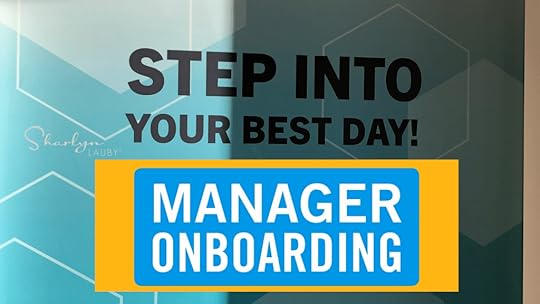
The quality of an organization’s management team has always been important. I think over the past year, we’ve learned just how difficult it can be when the organization has ineffective managers.
I’m not saying that this is entirely a manager’s fault. Some organizations hire and/or promote someone into a management position without giving them the tools they need to be successful.
I know the past year has been challenging, but now is an important moment for managers and employees. When the pandemic first started, organizations had to make quick decisions. And I believe everyone was prepared to be a little forgiving if things didn’t go exactly as planned. But as we talk more about vaccines and returning to normal, organizations need to get this right. They’ve had months to plan for it.
Getting it right starts with management. I’ve mentioned before that this could be a great time to have a mini-onboarding program for employees. It could be a part of a re-entry process. Well, maybe organizations should consider having a mini-manager onboarding as well. Get the management team on the same page. Offer them a few refresher sessions to make sure their skills stay current. If you’re looking for some manager onboarding resources, here are a few places to check out.
Managing Remote Teams (WEBINAR RECAP)
Over the past year, many organizations were forced to try out remote work situations, and the result has been largely positive. Employees enjoyed the freedom from the daily commute, the flexibility, and the ability to focus with fewer distractions. Even as businesses start to formulate reopening plans, they are doing so with an eye towards adapting long-term remote or hybrid work models. In this webinar with our friends at Criteria, we discuss five activities that managers should do to successfully manage remote and hybrid teams.
Giving Managers the Support They Need
There’s a tendency for companies to assume that the person they’ve hired to fill a management role already knows everything by virtue of them being selected as a leader. Without giving new managers the tools they need to succeed, they all too often only have the opportunity to learn on the job when they’ve made a mistake. And this isn’t an efficient use of anyone’s time. In this Punk Rock HR podcast with Laurie Ruettimann, we spend some time talking about setting managers up for success…and that includes onboarding.

HR Speaks Up: Manager Onboarding Masterclass
HR Speaks Up is a series of short and impactful videos offered by our friends at Ultimate Kronos Group (UKG). The series provides business leaders with actionable suggestions to improve their employees’ work life while also arming them with the tools to become better leaders. In this masterclass hosted by yours truly, we talk about the correlation between managers and employee engagement.
Episode 4: Bringing it All Together
As organizations start thinking about bringing employees together in the office, they have a real opportunity to refocus and reengage their workforce. It starts with having an energized and effective management team. Offering them a mini-onboarding session could be exactly the right way to help managers set the positive tone everyone wants.
The post Bookmark This! The Manager Onboarding Edition appeared first on hr bartender.






May 4, 2021
Agile Talent Strategy: Why You Need It and How to Develop One
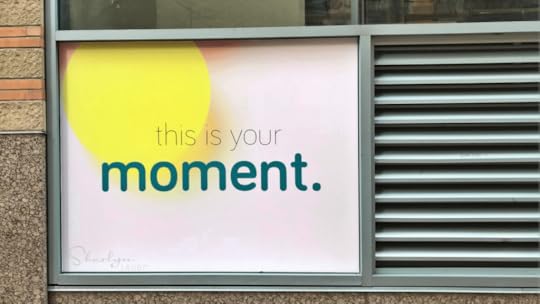
Estimated reading time: 6 minutes
(Editor’s Note: Today’s article is brought to you by our friends at SilkRoad Technology , a provider of strategic onboarding solutions to drive workforce readiness and organizational transformation. They were recently recognized as one of Chicago’s Best Places to Work . Congrats to them. Enjoy the article!)
Every day, more people are getting vaccinated and looking forward to their personal and professional re-entry. However, that doesn’t mean we’re all going to simply go back to the way things used to be. Too much has happened. This is an important issue that businesses should not ignore.
When the pandemic first started, organizations had to make quick decisions and not everything went according to plan. But I believe that employees, customers, and everyone else tried to be very tolerant and empathetic. That was then, this is now.
Organizations have been operating under this scenario for over a year. During this time, customers changed their expectations and spending habits. Employees changed the way they feel about work. Unfortunately, it’s possible that organizations didn’t adapt fast enough to the changes around them, according to a new report from SilkRoad Technology titled “Full-time Flexibility: Do employees feel supported working from home?”.
One of the biggest takeaways for me from the report was that 2 in 5 office workers plan to look for new job opportunities based on how their employer handled the pandemic. This aligns with other articles we’ve recently seen about the labor market. An article from the Society for Human Resource Management (SHRM) suggests that up to a quarter of workers plan to quit their jobs once the COVID-19 pandemic is behind us. Prudential’s Pulse of the American Worker Survey says that one in three employees don’t want to work for an employer that requires them to be onsite full-time.
So, what does all of this mean? I know that organizations are very focused on economic recovery right now. However, organizations need to start thinking about their talent strategy as part of that economic recovery.
Talent Strategy is a Key Component of Business StrategyThe good news is that talent and business performance have always been intertwined. And the solution for both is intertwined. We’ve been talking for a while about how business agility is important to business success. Organizations need to be able to quickly react to changing business conditions.
Well, the same holds true for talent. Organizations should adopt an agile talent strategy that allows them to react quickly to the changes in the labor market. Here are three components to consider in developing an agile talent strategy:
WHERE we work. Before the pandemic, working remotely was more of the exception than the rule. Then during the pandemic, remote work – specifically working from home – became the norm for many. Moving forward, organizations have the ability to create a best practice in terms of a hybrid model. The question becomes what does that hybrid model look like?
I wish there were some concrete answers to share regarding the right balance of remote and onsite work. Even the SilkRoad report notes that organizations haven’t reached consensus in this area just yet. But that doesn’t mean organizations shouldn’t consider a hybrid work environment. What it does mean is that it could take some trial and error to find the right balance for your organizational culture.
WHAT we work on. During the pandemic, 63% of employees took on new responsibilities, according to the SilkRoad report. Totally makes sense – everyone just did whatever it took to get things done. But given the statistic, it’s time for organizations to look at existing jobs. Make sure the right people are doing the right things and make any necessary adjustments to work responsibilities.
This has a cascading effect on other talent related activities. HR departments will want to reevaluate whether to buy, build, borrow, or use bots when it’s time to hire. Ideally, they should be looking at all four strategies. Managers should be provided with the training and tools to effectively manage a remote workforce. The SilkRoad report noted that over half of workers wanted more support from their employer. Finally, onboarding programs should be adapted for a hybrid work environment. If organizations want employees to be successful, they have to spend time setting employees up for that success. We all know that starts on day one.
HOW we get things done. There’s a McKinsey study that reported the pandemic has accelerated the digital transformation by as much as seven years. While that can be an overwhelming statistic, it’s equally important to remember that all digital transformations are not equal in terms of results.

The SilkRoad report cites that the reason digital transformations efforts often fail isn’t because of the technology but rather because organizations didn’t make the investment in people, who are responsible for executing the transformation. If we think about these three components – where we work, what we work on, and how we get things done – it’s a good reminder that organizations will need to invest in learning, training, and development to ensure ongoing business success.
Agile Talent Strategy is the “Next Normal”I totally understand that organizations are anxious to get to the next normal. Lilith Christiansen, chief strategy and product officer at SilkRoad Technology, reminds us it won’t happen overnight. “Our current environment and the change and disruption we’ll all continue to experience presents an opportunity for organizations to redesign their employee experience or talent strategy.”
The good news is that data – like the data found in this SilkRoad report – can help us identify where to focus our talent strategy. Christiansen reminds us that organizations need a successful talent strategy to have a successful business strategy. “We should continue to deliver intentionally designed experiences as well as a cadenced delivery of content, learning, and performance conversations. We also need to prioritize flexibility over rigidity in our approach to where work gets done. If we are to be successful in the future, we must increase our focus on communication, inclusivity and alignment, and adopt more outcome-oriented performance strategies that drive engagement and contribution.”
If you would like to learn more about how to align your talent strategy with technology, join us on Tuesday, May 18, 2021 at 11a Central / 12n Eastern for a webinar on “Aligning Your Organization’s Talent Strategy with an Agile Technology Strategy”. And as always, if you’ve already got something booked during that time, sign up anyway and get the recording. It’s going to be a good conversation.
The post Agile Talent Strategy: Why You Need It and How to Develop One appeared first on hr bartender.






May 2, 2021
Hybrid Workforces Must Be Equitable for Everyone
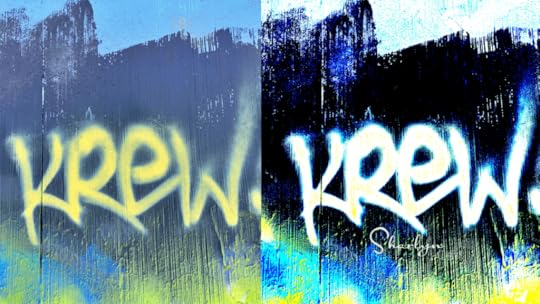
Estimated reading time: 4 minutes
As we’re hearing more about vaccines, it’s only natural to talk about people gathering together. And that of course, leads to a conversation about employees coming back to the office.
It reminded me of an article I saw on Business Insider a couple of months ago about how “Zillow is adopting a hybrid model of work, but its CEO says it’s trying to prevent one major downside: a ‘two-class system’ where those who come into the office are viewed as better employees.” I agree with Zillow’s CEO that hybrid workplaces could perpetuate inequities. However, I also believe that organizations have the ability to create hybrid workplaces that don’t. It will take a lot of hard work and resources to successfully create a hybrid workforce.
Many organizations entered the pandemic with a small number of remote workers. The reasons those workers were remote varied greatly. For some, it could be related to parental or caregiving responsibilities. Or maybe it was a high performing employee who relocated, and the company didn’t want to lose them. Or possibly both. It would be interesting to know how many employees – prior to the pandemic – were told that working remotely would severely limit their career opportunities. My guess is there weren’t many – if any at all.
My experience with remote work and hybrid workplaces is that employees are told that they could work remotely as long as their productivity didn’t suffer, and they would be available to come into the office as needed. While there was a bit of a learning curve, managers were able to manage one or two remote employees without too much trouble.
The challenge with the hybrid model is that it means large scale change. It’s a new way of thinking about the workplace. There are three areas that organizations need to address:
Management: The management team needs the equipment and tools to effectively manage hybrid workplaces and a remote workforce. They need to be able to hire, build relationships, set performance expectations, coach, mentor, get/give feedback, and more. Being a manager is a hard job. Being the manager of a remote team is also a hard job. But it’s not impossible. It does mean that organizations need to give managers training and resources they need to manage effectively.Employees. Like managers, employees need to have the equipment and tools to do their work from a remote location. A big piece of this is technology. Employees need regular access to information, learning, as well as the other members of the team. That doesn’t mean all day video calls. There are wonderful pieces of technology that allow employees to collaborate and share information. Organizations will need to build the technology infrastructure for employees to get their work done.Organizational workflows. I’m going to label all of the policies, procedures, and guidelines that we use to get work done as “workflows”. With a remote workforce, some of those workflows need to change. It’s a big task to reevaluate how everything gets done. And I can see how it might be easier just to say, let’s just do it the way we’ve always done it. However, the exercise of reviewing workflows could be a very good thing for the business. The result could be a major streamlining of processes and greater efficiency.Creating hybrid workplaces is a big job. Think of it like creating an employee experience strategy. Or changing company culture. But it can be done. And it can be done well. The organizations that make the commitment to creating equitable hybrid workplaces will be the ones that are able to attract, engage, and retain the best talent. Because those organizations will have figured out how to maintain company culture with a hybrid workplace.
Image captured by Sharlyn Lauby at the 34th Street Graffiti Wall in Gainesville, FL
The post Hybrid Workforces Must Be Equitable for Everyone appeared first on hr bartender.






April 29, 2021
Bookmark This! The Hybrid Workforce Edition
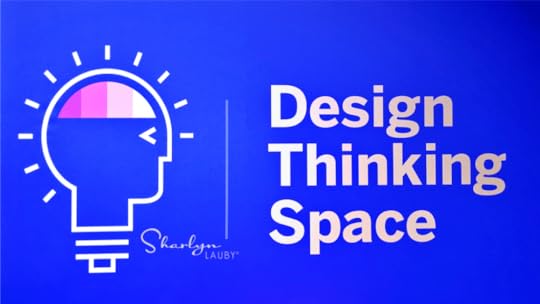
Estimated reading time: 3 minutes
I’ve heard a lot of talk lately about organizations wanting to plan for when employees return to the office and employees wanting to stay remote a while longer. This should not be a surprise to anyone. But I did see someone remark that “hybrid” workforces are starting to be a recruitment marketing tool. Organizations that are trying to recruit right now, might want to think about this.
On some level, hybrid workforces are flexible workforces. That’s not a bad thing. Companies can give employees flexibility (which increases engagement) and they can possibly save money in terms of rent, utilities, and possibly taxes. But creating a hybrid workforce isn’t like flipping a switch. It does take some planning. Here are a few articles that might help get the conversation started.
5 Key Elements to Creating a Hybrid Workforce
HR leaders should be ready to discuss how the workforce is changing and what it means for the business in terms of recruiting, engaging, and retaining talent. Creating a hybrid workforce isn’t hard, but it does require a well-thought-out strategy. Each individual component needs to work for both onsite and remote employees. And, the key elements together should support organizational culture, which in turn drives engagement and productivity.
3 Things to Consider When Designing an Employee Experience Strategy for a Hybrid Workforce
Organizations can use technology tools to communicate, train, and follow-up with employees, regardless of where they’re working right now. This builds trust because the employee knows that the organization is able to share important information with them in a timely fashion. And the organization knows the employee can share their feedback at any time from any location. It also means that as the organization grows and needs to change, technology is a respected tool that can be used by everyone. With the growing numbers of remote workers, organizations should review and possibly refresh their employee experience strategy to reflect this new hybrid workforce.
How to Provide the Same Level of Service to Onsite and Remote Employees
Right now is a perfect time for HR departments to consider how they can plan to provide an exceptional level of service to employees. HR departments are managing employees returning to the workplace as well as developing strategies for employees who will continue working remotely. It’s a natural conversation for them to consider, leading to actionable decisions. While HR’s goal to provide service is the same for both groups (on-site and remote employees), it’s important to design a process where both groups in a hybrid workforce receive the same level of service. Employees who work remotely can’t feel like their questions and issues aren’t receiving the same priority.
As organizations are planning their post-pandemic strategies, it’s important to remember a lot has changed. At some point, maybe every employee will want to work in the office. But I can’t help but think it’s short-sighted of organizations not to recognize that employees who have been working remotely might need a transition period. A hybrid workforce could be that transition.
Image captured by Sharlyn Lauby while exploring the streets of Barcelona, Spain
The post Bookmark This! The Hybrid Workforce Edition appeared first on hr bartender.






April 27, 2021
Organizations: Use Online Forms to Capture Valuable Data

(Editor’s Note: Today’s article is brought to you by JotForm , a full-featured online form builder that makes it easy to create forms and collect data. They’ve just launched a new product called JotForm Approvals that automates approval processes with ease , something every HR department loves to hear. Enjoy the article!)
One of the keys to good decision making is having the right data and information. For example, the finance department doesn’t want to make a decision about spending without looking at the financials. The sales department wouldn’t make a decision that impacts customers without understanding why customers buy the product or service.
And HR departments shouldn’t make a decision that impacts employees without understanding what employees need and want. I recently had the opportunity to test drive the JotForm site and realize how much data forms can capture for us. But more on that later. The good news is that there are several ways to gather employee-related information and data.
IN-PERSON Interviews. The biggest advantage to this approach is the benefit of reading body language and asking follow-up questions. But with that comes a disadvantage: in-person interviews consume a lot of time and resources. It also requires a skilled interviewer to be able to interpret those non-verbal cues.
PHONE / VIDEO Interviews. If the organization wants some of the benefit of in-person interviews without using as many resources, a phone or video call could be an option. The interviewer might be able to pick up on some of the voice inflexion to ask follow-up questions. However, it’s still time consuming and requires interviewing skills.
FORMS / SURVEYS. Obviously, forms and surveys don’t give us the benefit of the non-verbal cues. That being said, they are extremely cost effective. We can use forms and data to gather information from a larger group, creating more statistically relevant information. Forms and surveys can also allow the organization to collect more data, which could be helpful in determining trends.
Why Organizations Should Care About Collecting DataToday, let’s focus our conversation on the process and value associated with collecting data via forms and surveys. I believe this is very relevant right now because organizations are trying to make significant decisions about the post-pandemic candidate experience and employee experience.
For example, over the past year, organizations have been doing video interviews. While the pandemic might have caused organizations to try this option, that doesn’t have to be the reason it stays or goes. I’ve talked to lots of recruiters who think video interviews should continue to be part of the process. But what do candidates think? Wouldn’t it be great to send candidates a short survey and get some feedback regarding the candidate experience? This is a perfect example of how a survey could provide the organization with information to make their candidate experience even stronger.
Another example might be the conversation that organizations are having about remote work. Maybe before making any big decisions, it would be helpful to do an employee survey. Find out if employees still want to work from home. If they do, see what they might need to make their remote work experience better such as an internet stipend or office equipment. I could see this being a short anonymous survey and based on the results, organizations can have more in-depth one-on-one conversations with employees.
These are just two examples of situations where I could see senior management asking HR for suggestions and HR wanting to have some data to back up their recommendations. But I can also see HR departments saying to themselves – our schedules are full. To do this right, we need data. HR doesn’t want to go to senior management and tell them that they couldn’t provide a recommendation because they didn’t have time.
So, we need to create something – like a quick form or survey. That takes time and often some creative inspiration. As I mentioned, I recently did a test drive of the JotForm site and that “unique data situation” was the big takeaway for me. Yes, JotForm has all the HR/employment forms you would expect: employment applications, employee referral forms, performance reviews, exit interviews, etc. They even have Health Insurance Portability and Accountability Act (HIPAA) and COVID related forms like medical information forms, HIPAA authorizations and privacy notices, COVID self-screening questionnaires, etc.
But what jumped out at me were the forms we need but often have to create. Like an “employee favorites” form for new hires. Organizations can welcome a new employee with their favorite things. Or an equipment checkout form so remote employees can borrow/return things they might need from the office to get their work done. Or an internet speed form, so employees and organizations can make sure employees have the broadband access they need to do their job. And if you need something unique – like a candidate survey – you can create it using JotForm.
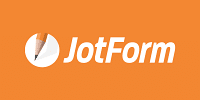
Now I know what you’re thinking (because I was thinking it too). Once I get all these completed forms, what’s next? It’s a good question. With JotForm, you can import the data into a spreadsheet and then use the spreadsheet data for trend analysis, etc. Also, as a quick side note, while our conversation today has been focused on forms, JotForm has a simple customer relationship management (CRM) spreadsheet. I’m planting this little seed because, if your organization is ramping up their recruiting efforts and you don’t have this feature, you might find it valuable. It can help recruiters stay on top of their contact with candidates. Now back to forms.
Forms Aren’t Evil. They Provide Valuable Data.Right now, organizations are trying to figure out the best way of finding the best talent, make sure their employees are performing at a high level, and take care of their customers. I know we don’t often think of forms as being an answer to those things. But we can’t discount the value of forms. Forms collect data. And organizations need data to make good decisions. Especially now.
If you’re looking for ways to get more valuable data, think about trying JotForm. They offer FREE Starter plans so you can see firsthand the value that they can provide.
The post Organizations: Use Online Forms to Capture Valuable Data appeared first on hr bartender.






April 25, 2021
Employee Compensation Practices Could Be Impacted By Remote Work

In the first episode of The HR Bartender Show, my guest Jim Stroud, vice president of marketing for Proactive Talent, mentioned a challenge for recruiters that revolved around location-based pay. It had been reported that Facebook was going tie pay to location. For example, if I worked for Facebook in California and during the pandemic I moved to North Carolina, my salary could be adjusted according to the North Carolina salary market.
Since Jim mentioned this, I’ve seen an increasing number of comments from recruiters about location-based pay. I wanted to get some more information on the topic, so I reached out to our friends at WorldatWork to see if they would give us a primer on the role location plays in compensation. Alicia Scott-Wears, GRP, CCP, GPHR is director of total rewards content at WorldatWork. Her experience includes compensation, benefits, recognition, and systems in the technology, automotive, and manufacturing sectors.
Alicia, thanks so much for helping us. Let’s start at the beginning. What’s a compensation system, what are the traditional factors found in a compensation system, and why should organizations have one?
[Scott-Wears] An organization’s compensation system or program entails mindset, approach and delivery. The two factors that support a compensation program are:
The pay philosophy (or strategy) which sets the purpose and approach the organization intends.The compensation structure leverages data to frame and deliver the intended pay strategy.In order to construct a framework from the most comparative segment to your organization, the common factors considered in building compensation structures are:
Geographic location (or market) IndustryOrganizational size and revenueOrganizations benefit from an established compensation system to achieve common objectives like strategic alignment to the organization’s goals at an acceptable cost; attracting, motivating and retaining top talent; having equitable, competitive and legally defensible pay approaches; and providing a pay approach that is understandable and efficient to administer.
You mentioned geographic location or market as being a factor in building compensation structures. Why is that? And why is that a challenge right now?

[Scott-Wears] Companies want to be competitive and pay fairly/equitably so location has typically been a consideration in determining compensation because it reflects the competitive or ‘going rate’ for talent in a geographic market.
Recently, challenges have arisen due to significant increases in remote work. Many workers are asking to voluntarily relocate and take their newly remote job with them. In some cases, this has drastically changed where work gets performed and where talent resides – often in locations where organizations did not previously have operations or employees.
Organizations are now choosing whether to leverage remote jobs to expand into new geographic markets where they can source talent. They are also evaluating overall geographic pay policies to determine whether to consolidate geographic pay policy by region, expand by metro area, or to perhaps go with a national structure for geographically disperse remote workforces.
Do cost of living adjustments (COLAs) play any role in this challenge? Why or why not?
[Scott-Wears] Cost of living may be a consideration for some, but most organizations are more focused on cost of labor. WorldatWork’s recent Geographic Pay Policies Study found that 91% of respondents indicated that cost of labor was highly influential in determining their geographic pay policy approach.
Cost of living is related to consumer costs but when organizations are aiming to achieve market-competitive pay rates the goal is to assess the relevant talent costs. Using cost of labor, they are seeking to align employee pay with the comparative cost of attracting and retaining talent in that geographic market.
What are the advantages/disadvantages to NOT using location in compensation design?
[Scott-Wears] Whether or not to use location in compensation design is a strategic decision for competitive positioning of the organization. It may only be relevant to those with notable variations in cost of labor based on geography and whether that geography is determined on worker location or employer location.
Where such variations exist, there is the potential for under- or over-paying if additional location consideration is not given. This could have recruitment, retention, and cost implications. Historically, location has not been a factor for certain roles, like top executives, and instead a ‘national’ rate approach may be applied as this encompasses nationwide locations rather than a specific location. Overall, organizations will determine the ‘right fit’ that allows them to attain a competitive and equitable approach that aligns with their culture and goals.

Last question. Right now, some organizations are telling employees that they can live / work wherever they want, but their pay might be adjusted. Are there any suggestions you would give to employers considering this move?
[Scott-Wears] My first suggestion would be for organizations to thoroughly think through how their pay philosophy and organizational culture will align with, or be supported by, their geographic pay practices.
I also recommend careful consideration of the ‘anywhere’ approach, even just within the United States because this can entail legal establishment, additional administrative expertise, and costs for things like payroll set up, taxes, unique state laws and disclosures, and workers’ compensation. I would also recommend that they consider their level of transparency around work from anywhere; consider how broadly it will be communicated and to what detail. They should monitor and analyze the alignment of their practice with their policy to avoid any unintended pay equity issues.
And finally, I would recommend they have a thorough plan for enablement which may include:
Coaching managers on managing a remote workforce;Remote-conducive methods for achieving recognition, ongoing engagement, and well-being; andOptimized electronic processes and tools for effectiveness and efficiency.I want to extend a huge thanks to Alicia for sharing her knowledge with us. If you want to stay on top of the conversation about this topic, check out WorldatWork’s Workspan publication which focuses on all things total rewards. And they also have a COVID-19 resources page which discusses how the pandemic is impacting total rewards.
This conversation is just one of many that are going to emerge in the months to come. The pandemic has changed the way we work. Organizations have some decisions to make. My takeaway from today’s conversation is that organizations need to take a hard look at their culture and what they want the employee experience to look like when making these types of decisions.
Image captured by Sharlyn Lauby while exploring ZooTampa at Lowry Park in Tampa, FL
The post Employee Compensation Practices Could Be Impacted By Remote Work appeared first on hr bartender.






April 22, 2021
Employee Retention: Think About Post Pandemic Strategies

Estimated reading time: 4 minutes
I’ve seen two articles recently that indicate employees are preparing themselves for a job search.
LinkedIn’s Workforce Confidence Index shared that 74% of employees are doing what they call “sheltering at work”. This was described as collecting a paycheck, enjoying the company benefits, and waiting out the pandemic. The implication is that once vaccines are more available and individuals have more freedoms, employees might start actively exploring new opportunities.
In an article on the Society for Human Resource Management (SHRM) website, several studies were cited pointing to the same dynamic – more than half of employees plan to look for a new job in 2021. The reasons that employees are considering a change include better compensation and benefits, more work/life balance, and less stress.
I know organizations are very focused on economic recovery right now. Totally makes sense. We can’t forget employee retention in the company’s economic recovery plans. The last thing the organization wants to do is start making plans to increase productivity only to find that they don’t have the workforce to support it. Here are a few things to include in your recovery plan that demonstrate your employee commitment.
Provide regular communications updates. It’s tempting to say, “Communicate more!” but the real message is “Communicate smarter!”. In early days of the pandemic, some companies went into full video conferencing mode and didn’t look back. I have nothing against video conferences, but we know that employees are burned out. They need information to do their work so figure out the best way to send it.
Make sure the company’s workforce plan is current. It’s unfortunate, but some organizations had to do layoffs over the past year. But as organizations begin their recovery, they will need to focus on employee retention and do some hiring. Don’t wait until the last moment to begin thinking about hiring plans. Don’t make the assumption that you can advertise a job opening and hundreds of people will apply.
Make safety a priority. Last year, Dan Schawbel published an article on The Workforce Institute at UKG blog titled “Why Employers That Prioritize Safety Will Win the Ware for Talent”. It’s still relevant today. I continue to hear stories from employees who are being pressured to return to work even though they don’t feel safe. I can’t imagine they plan to stay with those organizations long-term.
Develop a phased approach to having employees return to the office. As more individuals receive the vaccine, organizations will look for ways to bring people together. Totally makes sense. However, I don’t know that everyone needs to return on the same day. Or that employees need to stay all day. Organizations might want to let employees ease into the workplace routine, so they feel safe.
Differentiate between the “needs” and “wants” of the business. Mr. Bartender and I are starting to have conversations about the things we hope to do once we’re vaccinated. Like many people, we’re looking forward to dining out in a restaurant. Do I want to eat out now? Yes. Do I need to? No. As organizations start making decisions, identify the needs and wants. It could impact employee retention decisions.
Give managers support and training. Managers are the front-line for handling employee questions and requests. Before they say or do something that you would have preferred they not say or do, give them training and the tools to properly handle matters. Employees often leave jobs because of managers so make sure managers are well prepared for the changes ahead.
Thank employees for their patience and support. The past year has been tough. It’s possible that prior to the pandemic employees were having challenges as well – working short staffed and long hours. The next few months might be great – increased business, more mobility, etc. But that doesn’t mean they won’t be without challenges. Be sure to thank employees for being flexible and handling all of the changes.
Organizations that want to increase employee retention are going to want to communicate regularly, make employees feel safe and welcome, and give managers the tools to handle issues. Countless studies show the way to make employees stay with a company come down to making them feel wanted, giving them the tools to do the work, and thanking them for a job well done. Now is not the time to forget what it takes to keep employees engaged and connected to the company.
Image captured by Sharlyn Lauby while exploring Duval Street in Key West, FL
The post Employee Retention: Think About Post Pandemic Strategies appeared first on hr bartender.






April 20, 2021
Organizations: The Time to Start Recruiting is Right Now

Estimated reading time: 6 minutes
(Editor’s Note: Today’s article is brought to you by our friends at Poster Guard® Compliance Protection, a division of HRdirect and the leading labor law poster service that gets your business up to date with all required federal, state and local labor law postings, and then keeps it that way — for an entire year. Enjoy the article!)
I’ve seen a couple of interesting articles lately about recruiting. First, the U.S. Bureau of Labor Statistics March 2021 jobs report said that employers added almost 1 million jobs and the unemployment rate is down to 6%. The other one was a recent article from the Society for Human Resource Management (SHRM) that hinted at a turnover “tsunami” once the pandemic ends.
While the job market isn’t back to pre-pandemic levels, these recent articles indicate that HR departments need to start thinking about building talent pools and filling candidate pipelines.
One aspect of the recruiting process that’s often overlooked is posting compliance. Similar to the labor law posters required for your employees, there are specific postings you must make available to job applicants as well. Organizations are required to post applicant-facing notices regarding equal employment opportunity, family/medical leave, the polygraph protection act, immigration, etc. There are various applicant posting requirements under federal, state and local laws.
When everyone works in an office, and everyone is interviewed in an office environment, posting these notices is easy. You can just purchase the posters. The situation changes when organizations have remote and hybrid workers. But it doesn’t have to be difficult. With an online applicant posting service, providing candidates with the required information can be easy.
5 “Additional” Advantages to Online Applicant PostingsI think it’s important to note that making sure applicants have access to posters is required by law when recruiting. If applicants come into your facility to apply, they need to be able to read the postings. And if applicants do not visit your facility, it’s still required.
That being said, I know from firsthand experience that it is helpful to have more than simply “it’s the law” as the justification for doing something. Here are five additional advantages to taking applicant postings online:
ADVANTAGE #1 – SOME OF THE HIRING PROCESS IS ALREADY ONLINE. Many organizations already use online applications. An online applicant posting service streamlines the process because applicants see the required postings when they complete their online application. This can also protect a company from potential employment-related lawsuits.
ADVANTAGE #2 – THE COMPANY’S COMMITMENT TO COMPLIANCE IS REINFORCED. The reason we are seeing warnings of a turnover tsunami is because employees feel they were treated badly during the pandemic. That organizations placed profit over people. An online applicant posting service can send the message that the organization values compliance. It’s a good first impression and reflection of the company’s brand. It can help build trust.
ADVANTAGE #3 – VIDEO INTERVIEWS ARE SUPPORTED. I’ve heard from many organizations that video interviews – especially initial screening interviews – are here to stay. Even if the organization decides to conduct all of their interviews in-person again, that might not happen for some time. Making sure that candidates see the required postings early in the process is important. An online applicant posting service accomplishes that.
ADVANTAGE #4 – FEDERAL, STATE, AND LOCAL LAWS ARE COVERED. As a result of the pandemic, many organizations have realized that remote employees are very productive. They’re allowing employees to work remotely and “casting a wider net” when looking for new hires. An online applicant posting service allows organizations to stay on top of all federal, state, county, and city postings. HR departments can focus on sourcing and hiring great employees instead of posting compliance.
Now I don’t want to take this conversation too far off topic, but I believe there is one more advantage to having an online applicant posting service when recruiting: Employees get used to having information delivered in that format.
In general, there’s a trend toward moving administrative tasks to an online format. This could be a perfect time to think about the organization’s candidate experience and employee experience – and how to connect the two.
Here’s an example of how the process might work. The organization accepts job applications online and uses an online applicant posting service. When the candidate becomes a new hire, they would complete an online Form I-9, W-4, direct deposit authorization, employee handbook acknowledgement, etc.
Take it one step further and put all of the company’s mandatory labor law postings on a secure intranet. Now all of your employees – onsite, remote, or hybrid – can see the information that applies to them at any time. I can definitely see this being the future of compliance. Organizations being open and transparent about compliance requirements and creating a single location for employees to view everything.

One question that popped into my mind as I was working on this article, and I’m sure you have the same question too was, “Is having a single point of reference for compliance postings legally acceptable?”
I asked Ashley Kaplan, Esquire, senior employment law attorney for ComplyRight about this issue. She leads the expert legal team for Poster Guard Compliance Protection. ““While it’s recommended to have a central location for all employees to view compliance postings, such as an online portal, this option doesn’t replace the full-size labor law postings required at your facilities. As long as you have onsite employees, you’ll need those posted on the walls. But the online postings fulfill the requirement for remote and hybrid workers, while also providing an additional point of access for onsite workers.”
Don’t Forget Applicant Postings in Your Recruiting PlansAs organizations start to think about economic recovery and increased hiring, it’s also the time to make sure that recruiting processes are in compliance. Companies will want HR and hiring managers to focus on finding the best talent, not searching the internet for compliance requirements. Leave that to the professionals. Poster Guard Compliance Protection is the leading labor law poster service in the nation. And their products are fully vetted by their legal team.
While recruitment was the focus of todays’ article, recruiting is only one of the compliance related matters that HR professionals need to think about. With a new administration, the potential exists for more changes in employment law. If you want to learn more about what areas might be impacted, check out this webinar on “What to Expect from the New Administration”. It includes information on the Affordable Care Act (ACA), immigration work visas, employee benefits, and much more. I think you’ll find it very interesting!
The post Organizations: The Time to Start Recruiting is Right Now appeared first on hr bartender.






April 18, 2021
Your Employment Brand Matters Now More Than Ever
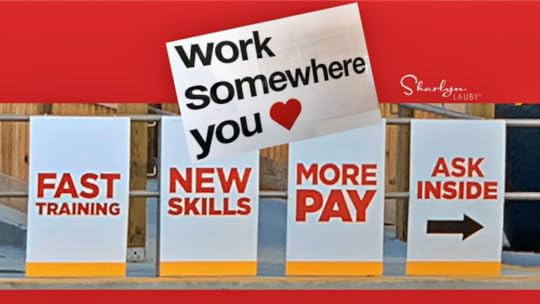
Estimated reading time: 4 minutes
I’ve seen more than one social media posting lately about “people just don’t want to work anymore” signage. These signs are typically found at the front door of businesses asking customers to be patient because they’re understaffed. When they are posted, the business probably is not thinking how it relates to their employment brand.
I totally get the understaffed part. The latest unemployment numbers are around 6%. While that’s still high compared to the 3ish percent that we had prior to the pandemic, it’s significantly lower than the 15% we saw a year ago. Just my personal opinion, but the economic recovery appears to be moving faster than anticipated (definitely a good thing!) but it might have caught more than a few businesses off guard.
Now that we’re in this situation, it’s time for organizations to put some focused energy and resources toward building their talent pipeline. Which takes us back to my initial sentence and the “people just don’t want to work anymore” signs.
Some of you might be reading this and say to yourselves, “It’s true! All that unemployment and stimulus money has created a situation where everyone just wants to sit at home and collect checks.” And, I’m not so naïve as to think there aren’t people out there who might be gaming the system. But I’m not convinced the number of people doing this is significant. At all.
Other reasons that a person might not be actively seeking work right now include being concerned about their personal safety during a pandemic. Attorney Jon Hyman recently shared a post on his blog about an employer being fined by OSHA more than $135,000 for prohibiting employees to wear face masks. Or maybe a person needs to care for other family members who have been impacted. Then of course, there’s the whole “maybe it’s time to change careers” aspect.
But I want to toss out another point of view to consider. Candidates are smart. According to a report from LinkedIn, 75% of candidates will research a company’s reputation before applying for a job opening. That research might include driving by and seeing a sign that says “people just don’t want to work anymore” on the front door.
Douglas McGregor developed a motivational theory called Theory X / Theory Y while he was working at the MIT Sloan School of Management. In short, the theory says that there are two models of motivation.
Theory X says that managers motivate employees by exerting a lot of supervision and penalizing people for not getting the work done.Theory Y says that managers motivate employees by creating interesting work and then supporting them.Again, candidates are smart. If they want to work for a Theory Y manager, is it possible that the sign on the door screams “We’re a Theory X place to work.”
Let’s take the conversation a little further. Because this isn’t about just taking a sign down off the door. Organizations need to take time to think proactively about their employment brand. In the same LinkedIn report I mentioned earlier, companies with a strong employment brand are likely to see 50% more qualified applicants and are 1x-2x faster to hire. This could reduce cost-per-hire by as much as 50%. Finally, companies with a strong employment brand have seen a turnover reduction of as much as 28%. These are all things that companies want. It helps organizations staff their operation with the best talent.
So, employers have a tough question to ask themselves. Is it that “people don’t want to work anymore” or maybe people just want to work for better employers?
One last thing to consider. To the companies that are posting “people just don’t want to work anymore” signs, please remember that this also sends a message to customers about how your organization treats their employees. Customers are also smart. Ask yourself, “will someone really want to spend money with an organization that has this view about how to treat their employees?”
We all want the same things here. Everyone wants the pandemic to be behind us. Organizations want to make money. People want to stop wearing masks and travel again. But we need to be smart about the process of re-entry. Coming across as an organization that puts profit over people might not be the best look for your employment brand. Especially at a time when you need employees the most.
Image captured by Sharlyn Lauby while exploring the streets of South Florida
The post Your Employment Brand Matters Now More Than Ever appeared first on hr bartender.






Sharlyn J. Lauby's Blog
- Sharlyn J. Lauby's profile
- 10 followers



